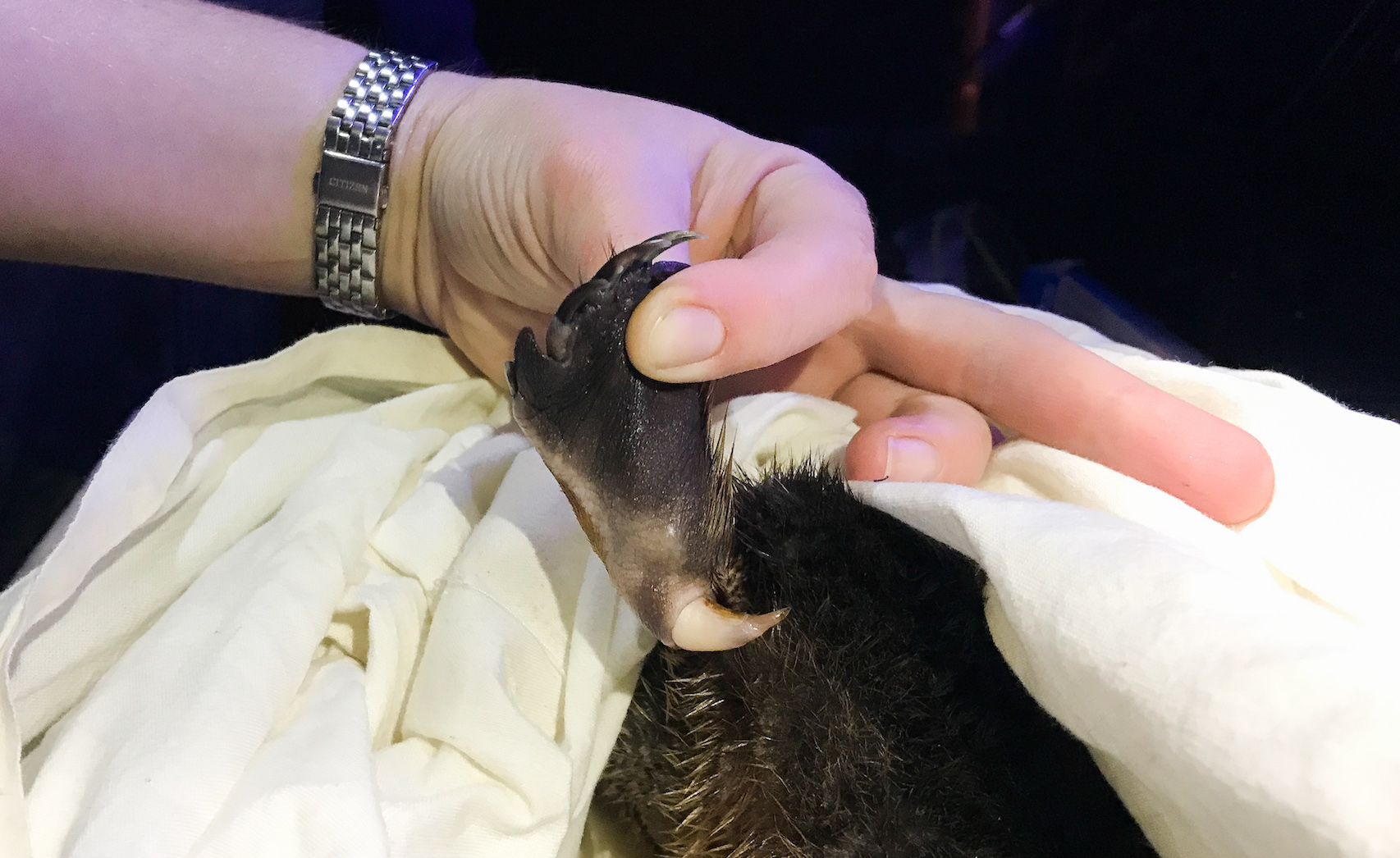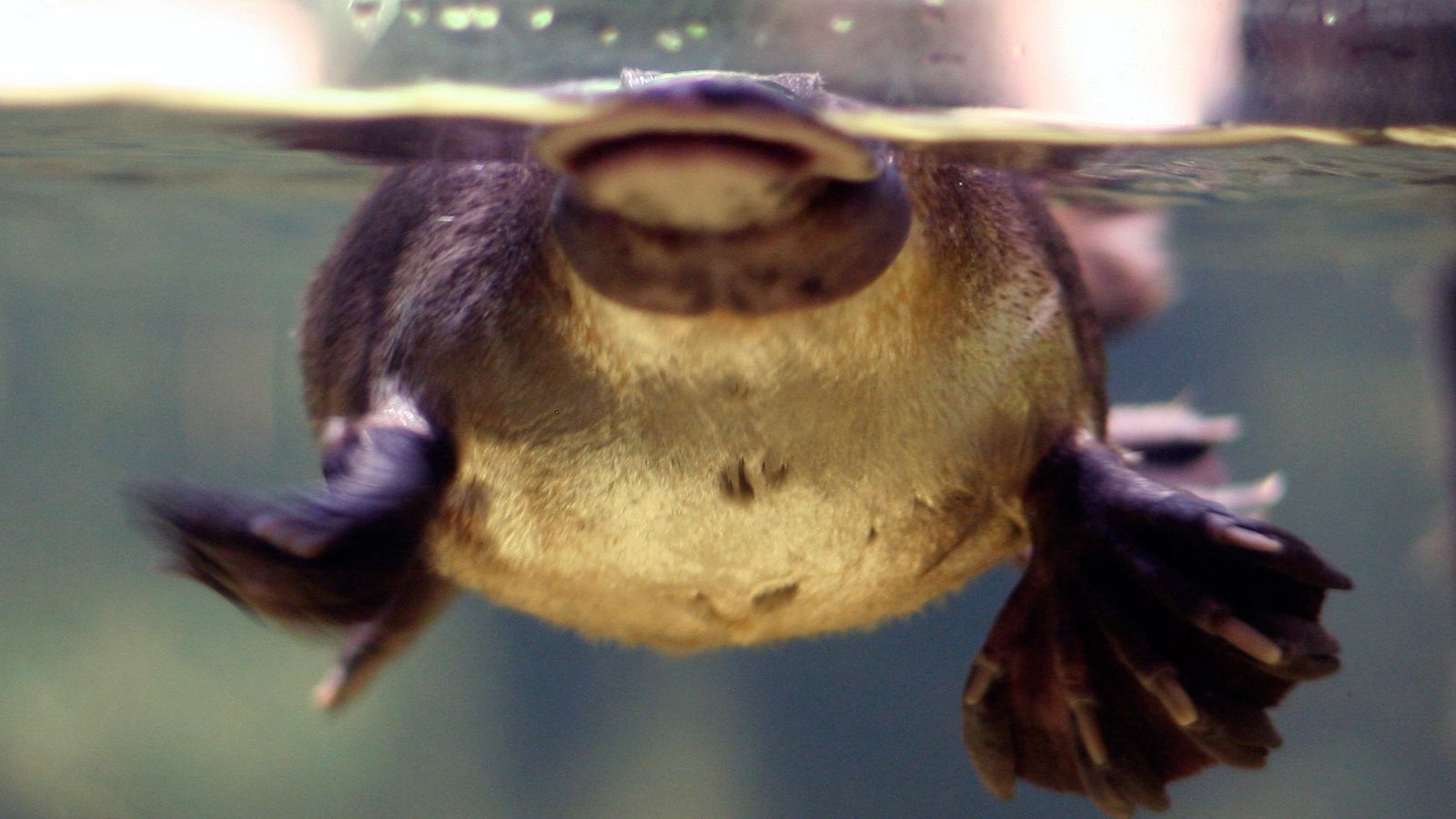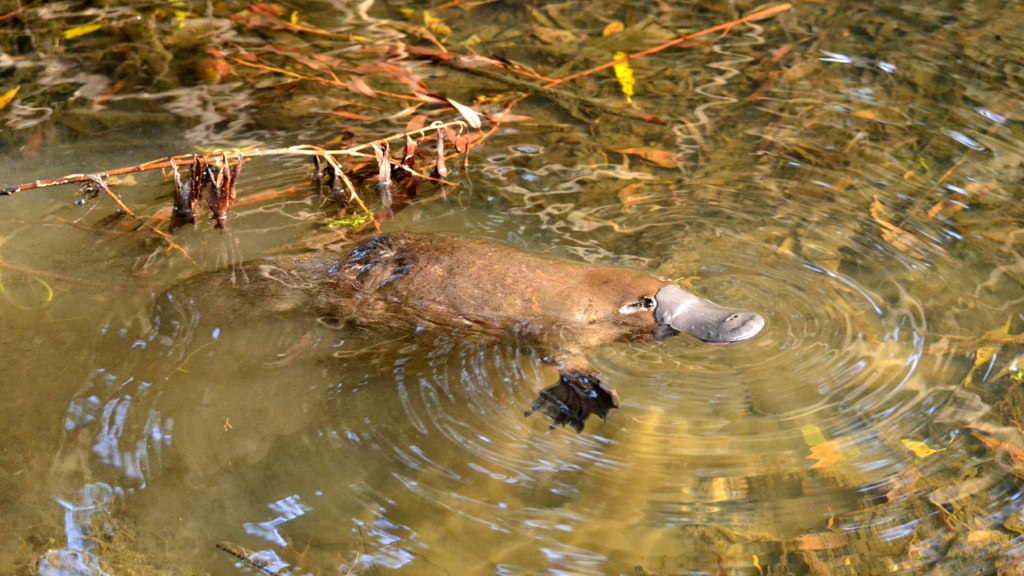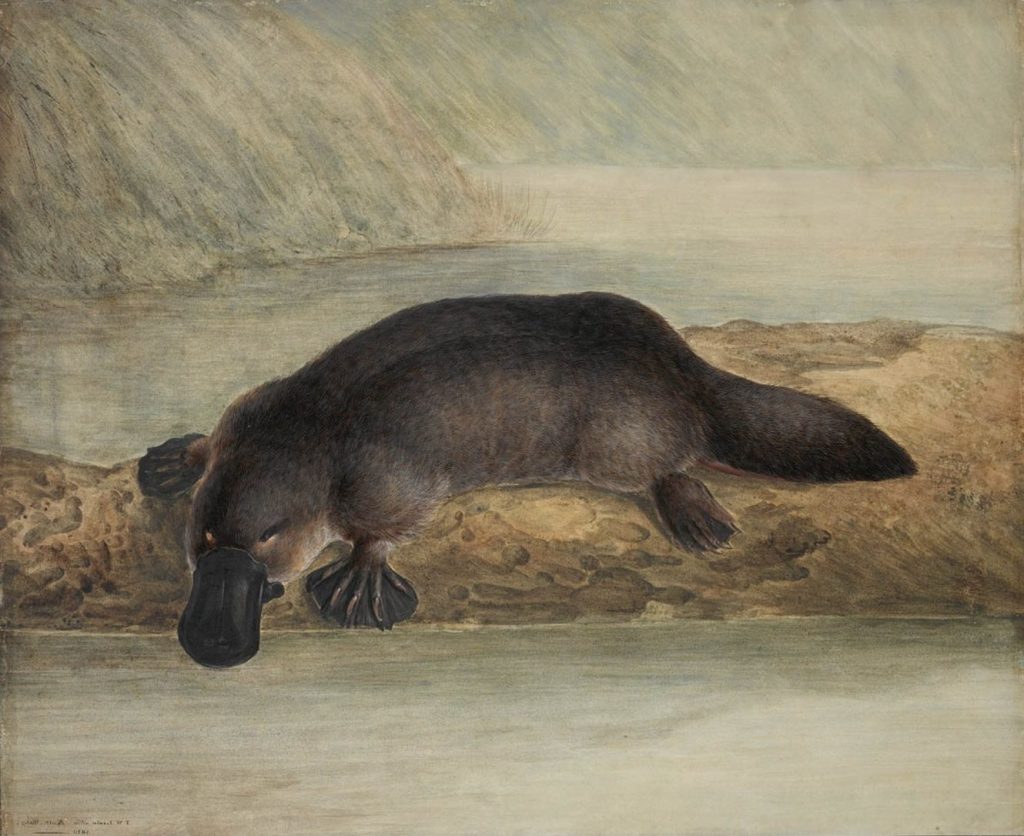British naturalist George Shaw was so baffled by the first platypus specimen sent back to England that he assumed it was a hoax and cut apart the taxidermied carcass, trying to find the stitching.
Who can blame him? Even today, most people know about the platypus precisely because its strange assortment of body parts — beaver-like body, duck bill, venomous spikes — look like something out of a medieval manuscript of mythical beasts. (Albeit after the authors ran out of ideas for dragons and sea monsters.)
But in the natural world, truth is often stranger than fiction. The platypus is far weirder than those early explorers and zoologists could ever imagine. And the more modern science reveals about these elusive little mammals, the weirder they get.
-
Their Venom Could Help Treat Diabetes

Male platypus have spurs on their hind legs, which can be used to estimate their age. Photo © Justine E. Hausheer / TNC You might have heard that platypus are venomous. But did you know that their venom could also help treat diabetes?
Male platypus have half-inch spurs on each of their hind legs. Each spur is connected to a crural gland — or modified sweat gland— which creates a powerful venom. Scientists think that males use these spurs to compete with rivals during breeding season.
While the venom isn’t fatal to humans, anyone unlucky enough to be jabbed can expect days of “immediate, sustained, and devastating” pain that’s resistant to morphine and other painkillers. (One Vietnam War veteran described the pain as worse than being hit by shrapnel.) Victims also experience nausea, gastric pain, cold sweats, lymph node swelling, and muscle wasting in the envenomated area.
And yet platypus venom could one day help treat illnesses: Australian scientists recently discovered that platypus venom contains a hormone that could aid in diabetes treatment. Called GLP-1 (glucagon-like peptide-1), the hormone promotes insulin release, which in turn lowers blood glucose levels. Humans produce GLP-1, too, and a modified version is already used in diabetes treatments. But human GLP-1 degrades very quickly. Platypus GLP-1 is much longer lasting, and scientists think it could one day lead to new medications for diabetes.
-
They’re One of Two Types of Mammals to Lay Eggs
One of the (arguably) weirdest elements of platypus biology is their reproduction.
Platypuses are monotremes, a type of mammal that lays eggs instead of giving birth to live young. (The four species of hedgehog-like echidna are the only other monotremes alive today, and they too live in Australia as well as New Guinea.) Female platypuses typically lay between 1 and 3 marble-sized eggs, which they incubate for about two weeks in an underground burrow. When the young (called puggles) finally hatch, they’re only the size of a jellybean.
Monotremes split off from the mammalian evolutionary lineage before the evolution of placentas, so they retain this distinctly reptilian method of reproduction. Scientists studying mammalian evolution suspect that egg-laying might be the reason monotremes survived into the modern day.
Between 71 and 45 million years ago, marsupials took over Australia and became the dominant type of mammal on the continent. New genetic research revealed that the platypus and echidnas share a common semi-aquatic ancestor, leading scientists to theorize that monotremes survived by taking to the water. Egg-laying allowed them to adapt to a semi-aquatic lifestyle and occupy an evolutionary niche not accessible to most marsupials, whose pouch young would drown if submerged.
-
They Nurse Their Young Without Nipples

A captive platypus. Photo © Biall Kennedy / Flickr The reproductive weirdness doesn’t stop there — platypuses have evolved to nurse their young without nipples.
Every other species of mammal on the planet nurses young via milk produced in a mammary gland and excreted through one or more nipples. But platypuses and echidna do things differently — they “sweat” milk through specialized glands in the skin. It pools on the surface of their belly, where you might expect to find nipples, and the young puggles slurp it up.
-
Their Milk Could Help Fight Against Antibiotic Resistance
Australian scientists recently discovered that platypus milk contains unique antibacterial properties that could be used to fight antibiotic-resistant bacteria. Their milk contains a special protein fold nicknamed “Shirley Temple” after it’s unique curled structure.
Scientists suspect that platypus evolved this special protein because suckling milk from the surface of the skin, instead of a nipple, left monotreme young more vulnerable to bacteria and infection. They hope that the discovery could be useful in countering the alarming rise of superbug infections that are resistant to most modern antibiotics.
-
They Have 10 Sex Chromosomes And a Defunct Ovary
Most mammal species have two sex chromosomes: either XX for females or XY for males. (In humans, cases of three or four sex chomosomes are possible, but rare.)
Once again, the platypus (and echidnas) are the odd mammals out. Platypuses have five pairs of sex chromosomes, or 10 in total. Males have five XY combos, while females have five XX combos. And though they are still X and Y chromosomes, the platypus versions are actually more similar to the W and Z chromosomes of birds than they are to the X and Y of marsupials and placental mammals, including humans.
This suggests that XX or XY sex chromosomes exhibited by placental mammals evolved after the two evolutionary lineages split 165 million years ago.
Despite these differences, platypus sex chromosomes are giving medical researchers insights into fighting human cancers. Geneticists discovered that DNA on platypus sex chromosomes is similar to the DNA affected by ovarian cancer and other reproductive diseases, including male infertility. They hope that the discovery could help pinpoint which cancer-caused DNA changes are most important in the development of the disease.
Speaking of ovaries… here’s one more weird fact for you: while the female platypus has two ovaries, like other mammals, only the left one is functional.
-
They Have No Stomach & Hunt By Detecting Electrical Impluses

A platypus in Tasmania. Photo © Klaus / Flickr At first glance, platypus hunting methods appear rather inglorious: they close their eyes, ears, and nostrils, dive down to the stream bottom, and wiggle their bill in the muck for a minute or two.
But it’s not quite that simple.
If you look closely at a platypus’s bill, you’ll see hundreds of tiny pores all over the leathery surface. Those pores are special electroreceptors, which pick up minute electrical impulses given off by platypus prey, including macroinvertebrates and small crustaceans. Platypus use this sensory information to locate their prey in the water.
Any prey they catch is stored in their cheek pouches until they return to the surface. Then, they grind it down using a hard plate in their bill, with the help of any gravel they might have also slurped up. Weirdly, little puggles are actually born with teeth, but these fall out when the leave the burrow and are replaced by the griding plate.
When it comes time to digest their meal, platypus are missing another basic part of normal mammalian anatomy: the stomach.
Animal stomachs come in a wide variety of shape and size, but they all perform the same function: they secrete acids and digestive enzymes to help break down food before it moves on to the intestines, where it’s absorbed by the body. But if you peer inside a platypus, you’ll find that their gullet connects directly to their intestines.
Platypus aren’t alone: scientists estimate that about one-quarter of fish species have also “lost” their stomach over the course of evolutionary history.
Just one more reason why they are as wonderful as they are weird.




Be carefull mankind; you might be aiding in your own demise, think of all the discovery that has been lost to Extinction ?
wow perry the platypus. (Febius &Ferb cartoon) Thank you i didn’t know all these things about them
Nice piece and expresses all the reasons I went into the wildlife field of work!
The Platypus is quite extreme
It’s body a monotreme dream.
Body of beaver
Beak of a duck.
Ancient Australian weirdness supreme.